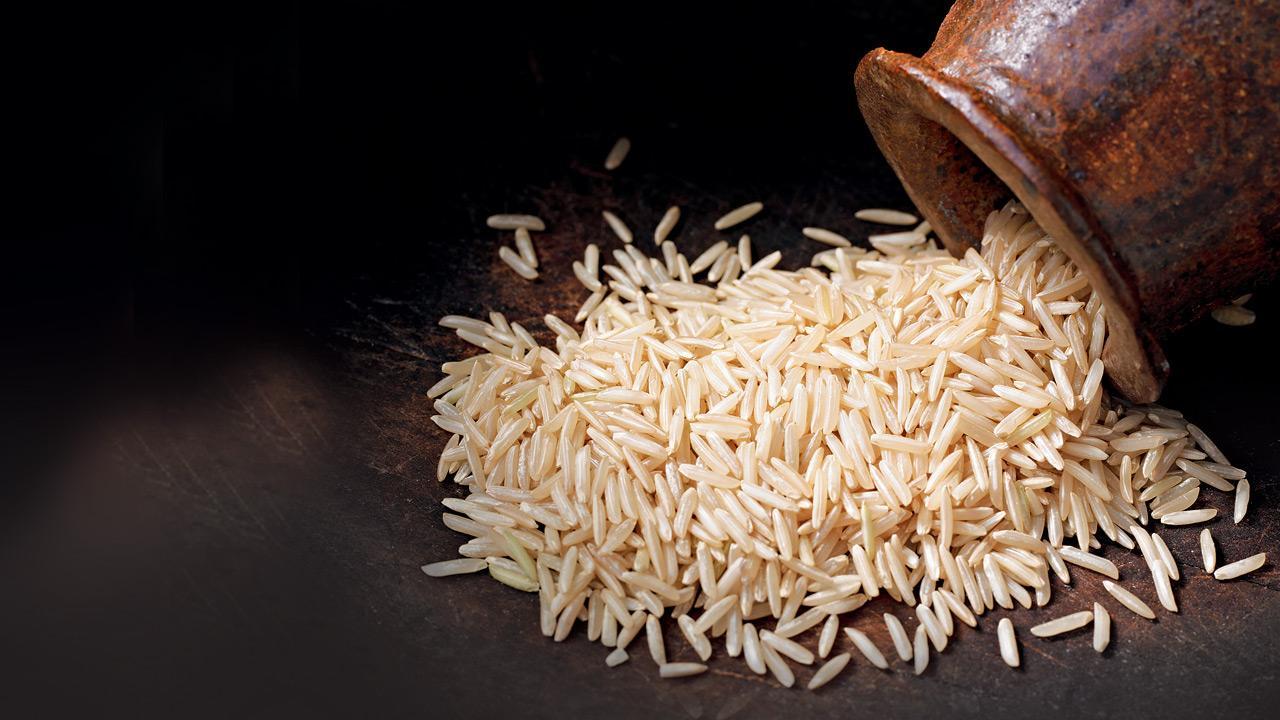With India and Pakistan expected to share ownership of the premium rice variety, we look back at its origins and decode why it’s been such a hotly contested ingredient

Basmati rice
India and Pakistan might be divided over a lot of issues, but the slender-grained, aromatic Basmati rice seems to be bringing them on the same page, err, plate. After a heated tussle over claiming the Protected Geographical Indication (PGI) tag for the rice variety in the European Union (EU) market, the neighbours are expected to make peace with joint ownership. The EU is a major market for export of Basmati, with India and Pakistan being the two key players. A PGI tag would give the country a near-monopoly status.
ADVERTISEMENT
Dr Mohsina Mukadam
Hot demand
This is not the first time that the premium rice grain has been at the centre of a controversy. In the 1990s, India had fought a US-based company’s bid to patent their rice varieties, which were similar to Basmati. What is it, then, that makes Basmati so popular? Ramesh Khemchand Chawla, owner of the Zaveri Bazaar-based K Bhagat Tarachand, points to the defining characteristics of the grain. “The unique feature of Basmati is that it’s an extra-long, slender grain that elongates to at least twice its original size [when cooked], with a soft texture that has a superior aroma and a distinct flavour. The rice does not stick to one another. It also has a high nutritional value as it’s low in fat and cholesterol,” he asserts.
In fact, the word Basmati, too, means one which has aroma, shares Dr Mohsina Mukadam, food historian and associate professor at Ramnarain Ruia Autonomous College. Another reason for its vast popularity, she notes, is the fact that the rice grain is associated with special occasions and elite households. “It’s a show of upward mobility, considering it’s quite expensive, costing Rs 200-plus/kg. So, there’s an aura surrounding it, which is possibly the reason for its demand. That’s why producers want to control it,” she reasons.
Poetic origins
The origins of this variety date back to 7 AD, when Chinese scholar Hiuen Tsang visited India and was residing with emperor Harshavardhana, reveals Dr Mukadam. Tsang in his records mentions a type of rice from that time — Mahashali. “He writes that this rice variety is long and fragrant; when cooked, it becomes the size of beans. He mentions that it is not meant for consumption by common folk. It is exclusively for emperors, or gifted by them to sages and esteemed guests. Tsang, being such a guest, was given this rice for consumption daily. So, that Mahashali could be the origin of Basmati,” she informs us. Basmati is in fact a part of India’s intangible cultural legacy, states Vishal V Sharma, Ambassador/Permanent Representative of India to UNESCO, in a tweet recently, adding that it’s reference can be found in the poem Heer Ranjha (1766) by Waris Shah.
Ramesh Khemchand Chawla
Meanwhile, Chawla informs us that Basmati is a cultivar developed by farmers of India and Pakistan over 250 years ago, and originated in the foothills of the Himalayas, in the Doon Valley. “The Doon Valley has fresh water supply from the mountains, which was the source of enhancing the quality and length of the grain. In modern India, it’s widely grown in Himachal Pradesh, Punjab, Haryana, Delhi, Uttarakhand, western Uttar Pradesh and the Doon Valley. Of late, farmers have also moved to Madhya Pradesh to grow Basmati owing to the large rice production area, preferential soil, and climate conditions there,” Chawla tells us.
Dum biryani
Ingredients
For the gravy:
>> 2 bay leaves >> 1-inch cinnamon stick
>> 1 big cardamom (black) >> 2 small cardamoms (green) >> 2-4 cloves
>> 1 star anise >> ¼ tsp whole black pepper >> 1 medium onion (finely chopped) >> 1 small onion (fried later to put on the rice) >> 2 medium tomatoes (finely chopped or puréed)
For the biryani:
>> Veggies like carrots, capsicum, cauliflower, beans and peas >> 2-3
strands of saffron (soak-ed in water) >> ½ tsp haldi (cooked in ¼ cup water) >> Salt to taste
>> 1 cup Basmati (soaked for 20 minutes; aged for two years)
Method
Prepare the gravy by sautéing the spices, along with the onions and the finely chopped or puréed tomatoes. Next, cook a mix of the vegetables in the gravy. Cook the Basmati rice with haldi and saffron. Spread a layer of the sauce at the bottom of a large vessel. Layer it with the cooked vegetables. Add a layer of rice. Keep on layering in this sequence. Top it with fried onions, mint leaves and some saffron. Shut the lid and seal the container with atta so that none of the steam escapes. Place the handi in a tandoor (or gas burner) and allow it to simmer for 15 minutes. The dum flavour comes from being cooked in the tandoor. Garnish with a few cashews. Serve it hot with raita and papad.
- Ramesh Khemchand Chawla
Grain of truth
There are several varieties of Basmati rice — the key ones include Sharbati Basmati rice, Sugandha Basmati rice, Pusa Basmati rice and 1509 Basmati rice, shares Chawla. There are two prominent varieties based on quality — one is the original, traditional variety and the other is the 11-21 variety that has been modified genetically for longer grain. You can tell real Basmati from the fake by smelling it, he reveals. “Moreover, the fake grains are all consistent; of the same shape and size,” he adds.
 Subscribe today by clicking the link and stay updated with the latest news!" Click here!
Subscribe today by clicking the link and stay updated with the latest news!" Click here!






